Sheet Mulching in a Richmond California Landscape
Below are photos of our sheet mulching project on Carlson Blvd, Richmond Annex!
Located between San Pablo Avenue/El Cerrito to the east, Carlson Boulevard is the main thoroughfare through what is referred to as the the annex, connecting downtown Richmond with downtown El Cerrito.
Some sheet mulching basics if you want to try yourself:
It is great for very weedy areas. Sheet mulching helps soil hold moisture and does not require digging the soil.
Trim any plants close to the ground. If your soil is heavily compacted, poke holes every foot or so to a depth of 6-12 inches.
Next
Soak the area well with a garden hose.
Add a layer of grass clippings, manure or compost just to about 1 inch.
Add sheet mulching – this can be a layer of newspaper or corrugated cardboard overlapping sheets by a minimum of 6 inches. Layers ensure that weeds or grass will not grow through.
Soak
Next, add a 1 inch layer of green materials; straw, leaves, tiny branches and soak thoroughly. Adding another layer of compost will ensure you are introducing enough beneficial bacteria, fungi and other microbes into the sheet mulch. These beneficial bacteria are what will restore the health of your soil.
A note about the materials we used – corrugated cardboard.

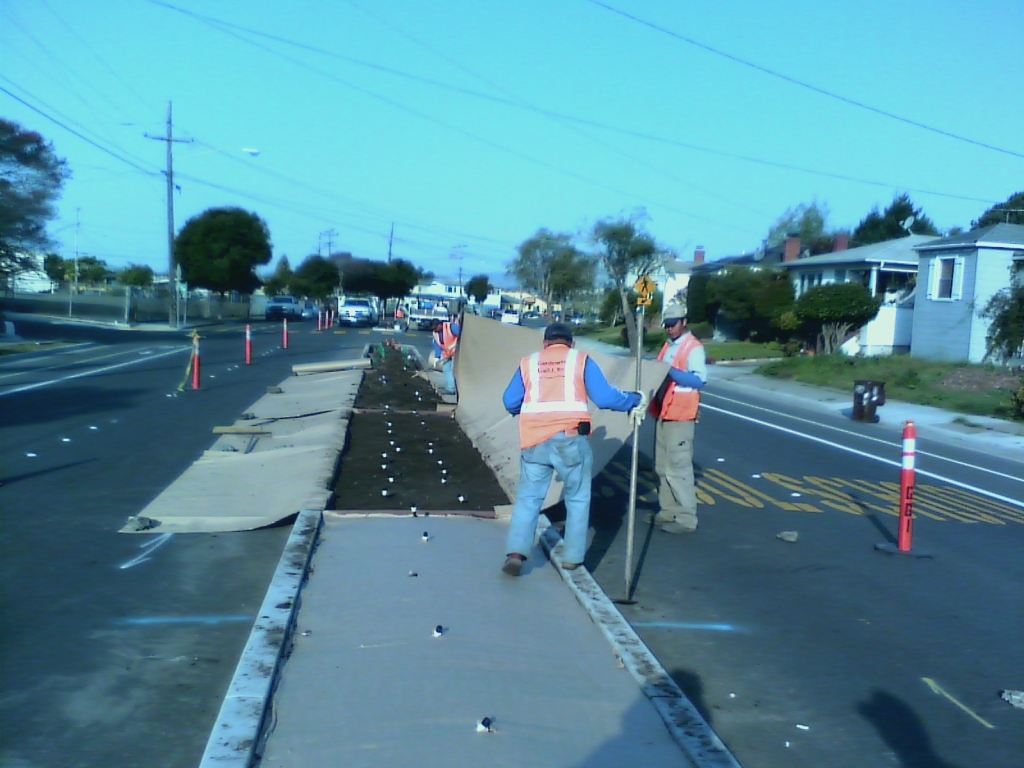
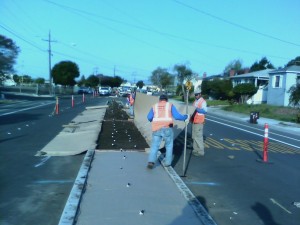
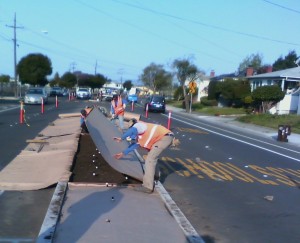
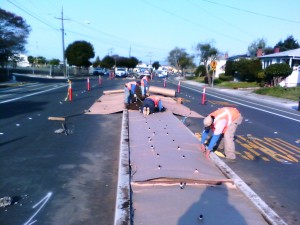

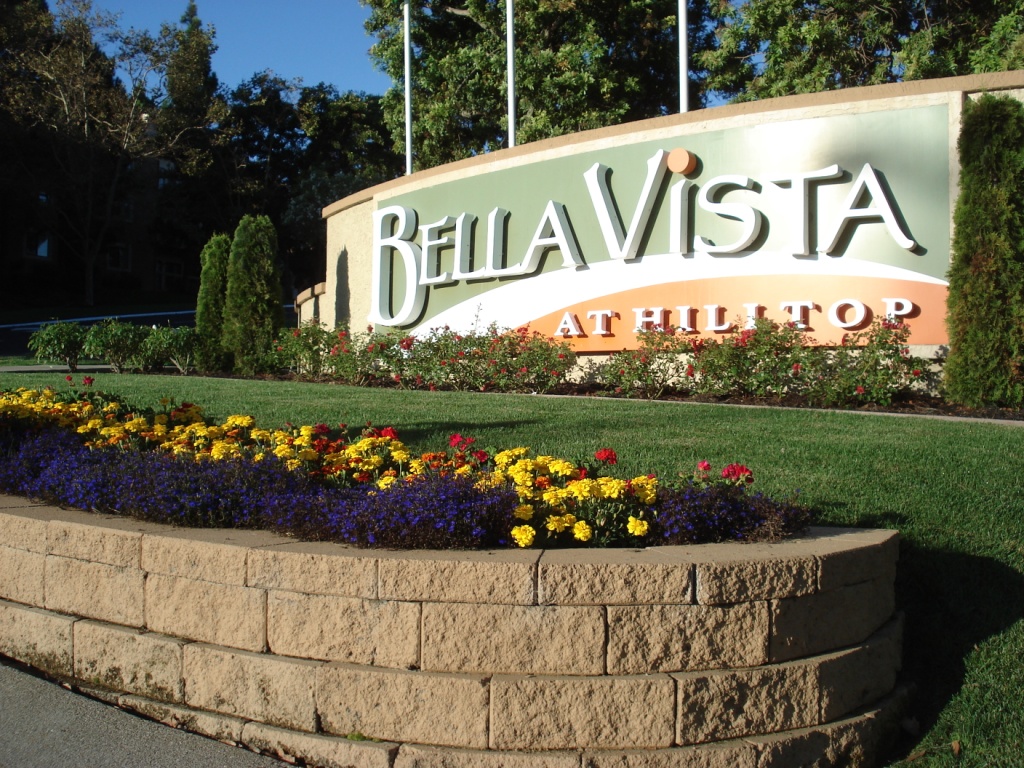
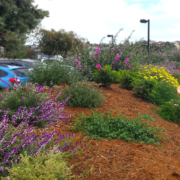

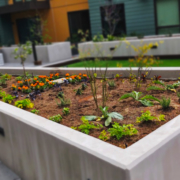
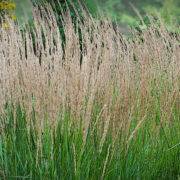

I’m familiar with the benefits of sheet mulching, but I’m curious if you’ve looked into the negative aspects of using newsprint and cardboard. I was taught, in organic gardening and soil fertility programs, that these materials have toxic substances from the ink and adhesives that leach into the soil and can harm the soil biology. How much and to what effect I don’t know, but that’s what I hope you will tell me.
I have always preferred to use just a thick organic material mulch, without layers of fabric or paper products that interfere with aeration, permeability and biological activity. Thanks, Don
I know some time has passed since Mr. cox put forth a very viable question as to the impact on the soil biology, when ink or cardboard adhesives are introduced to the soil. Unfortunately I cannot answer the affects of ink to the soil, but I can answer the portion of the question as it pertains to the adhesive used in the production of cardboard.
The ingredients that go into producing the adhesive used in cardboard production are as follow:
The first of the ingredients will be one of the following Starches. Cornstarch, Potatostarch, or Ricestarch.
The second ingredient used will be Borax.
The third ingredient will be Caustic Soda
The final ingredient needed is Water
As an example of the mixture necessary to make the adhesive, Water would be added to measured amounts of the combined ingredients of Potatostarch,Borax,and Caustic Soda, resulting in an adhesive used in the production of cardboard.
Non of the ingredients aforementioned to produce the adhesive, create adverse affects to soil biology.due to the ratio of each ingredient to the others.
Threfore it is concluded that the adhesives widely used in the production of cardboard do not create a threat to the soil biology when exposed to same.
I wish I could answer the impact that may or may not exist with the exposure of ink to the soil, but I cannot. I hope this information has brought some clarity to a very valid question/concern.. Thank You, Steven